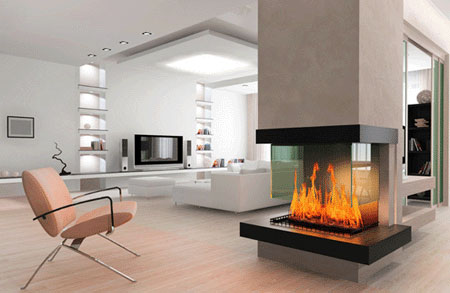
Home staging design is not supposed to represent your personal style or fit perfectly into your taste or lifestyle, although it may. Instead, home staging is all about one primary function and that is simply to enhance the appeal of your home to prospective buyers. Home staging is not necessarily about finding a look and feel that you want in your day to day lives. Instead, it is about selling an image which conjures up a buyer’s idyllic dream home, making them more inclined to submit a solid financial offer on your property.
This resource section helps readers to better understand design styles and to determine the best staged look and feel for their house or apartment.
Home Staging Design Complaints
When people hire a home stager, they often complain that the décor does not suit their taste or sense of personal style. This is the whole idea people. This is exactly why you hired a home stager to begin with. One of the main priorities of staging is to remove you from your home décor and depersonalize the interior and exterior spaces, imparting the residence with a more universal sense of appeal. This is crucial if a potential buyer is to envision themselves living in the property.
Another common complaint is that the stager is too picky and demanding, ordering the home owner to maintain their house like a showplace. While this is normal, there are some stagers who simply go above and beyond their limits, forgetting who really is the boss here.
Staging professionals must remember that the client is always the one with the final say. Families with young children or pets have a particularly difficult time dealing with the many rules and restrictions set by persnickety property stagers, especially when furniture, artwork and accessories are on loan.
Real Estate Staging Design Topics
Contemporary staging is the most common design sensibility used in home staging and the one I recommend to most clients without special circumstances.
Modern staging is appropriate in rare instances and is usually found in new high-rise buildings catering to upscale young buyers.
Traditional staging uses classic design elements to court family buyers in mostly rural and ideologically-conservative real estate markets.
Interior design is the science of integrating functionality into a beautiful design scheme.
Home aesthetics describe the criteria used to judge how appealing a piece of real estate truly is.
An open floor plan is a popular design in which most interior walls are removed to create large, open communal spaces, typically encompassing the kitchen, dining area and living room.
Adequate living space is one of the most important factors that buyers look for when searching for a new home.
Floral decorating utilizes flowers, plants and botanicals to complement the decor of any space, inside or out.
Minimalist staging is stark and reserved for extreme scenarios where “less is more” truly applies.
Asian home staging provides an Eastern sensibility to the design plan and is popular in many real estate markets, especially those courting Asian buyers.
Feng shui staging encompasses design cues from this popular Chinese philosophy and art form.
Vastu shastra staging uses elements from this traditional South Indian school of design.
World style staging incorporates a collection of decor items that represent many cultures and geographic locations into a single cohesive and interesting design scheme.
Home Staging Design Solutions
Finding balance is key in all things. This is a very applicable law in home staging, as well. You need to use staging techniques to optimize the value and saleability of your home, but you also need to do so on a budget and while living in the home, until it sells. This can be easily accomplished, but it takes some work on the part of the homeowner.
First off, it is so important to plan and complete your staging before listing the house for sale. This is the best way to get the most bang for your buck and really take advantage of the many benefits offered by home staging.
Second, you need to realize that you might have to spend some money to get the job done right. Remember that you can always hire a property staging consultant and do much of the work yourselves. This is a great way to save tons of cash, when compared to full service staging companies which do everything for you.
Last, it is always crucial to find the right stager for your needs, even if that means foregoing a professional altogether and doing everything by yourself.
Execution of a Perfect Design
When you hire a home fluffer or staging consultant, you are paying them to get you tangible results. They do not want to let you down. It is important that the homeowner and stager work together to make sure all the best techniques are used for their property and each must do everything possible to provide a positive result.
The stager will design a plan and execution, but the homeowner must maintain the vision, or else the entire investment will be a waste. Do not allow your stager to create an unrealistic environment for your family. If you have trouble living in a staged home for a week, imagine how you will feel if the house remains unsold for several months.
In the end you might have to make some creature comfort sacrifices to get your house sold, but you should never have to deal with a stager who literally moves you out of your own home. Think about this carefully before committing to any particular staging company.
You can learn all about excellent home staging design in our best selling and peer-acclaimed book.





